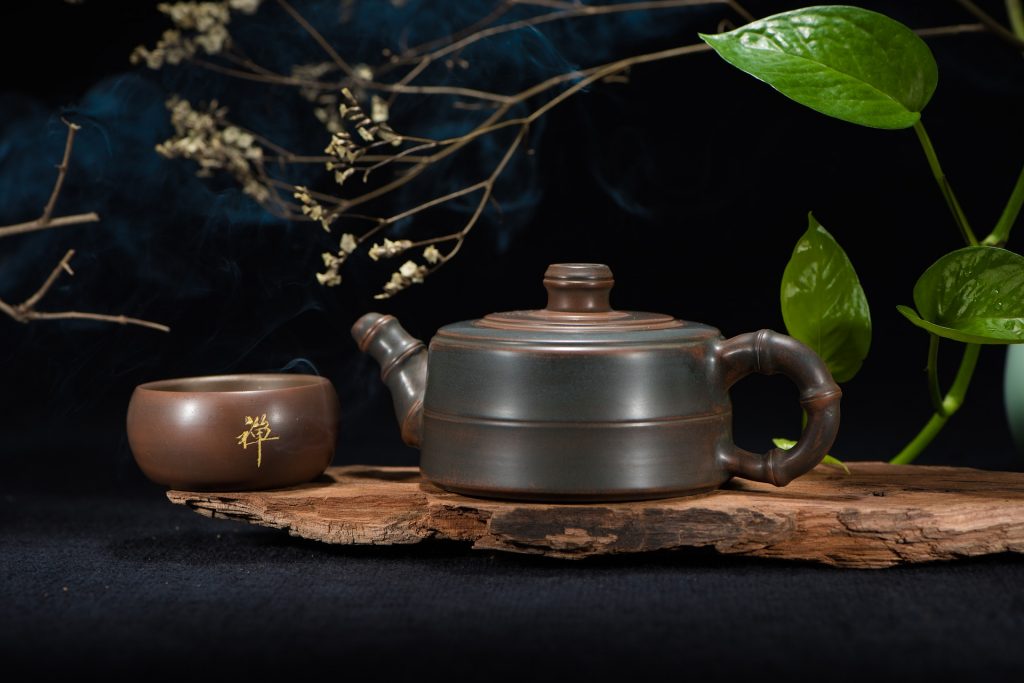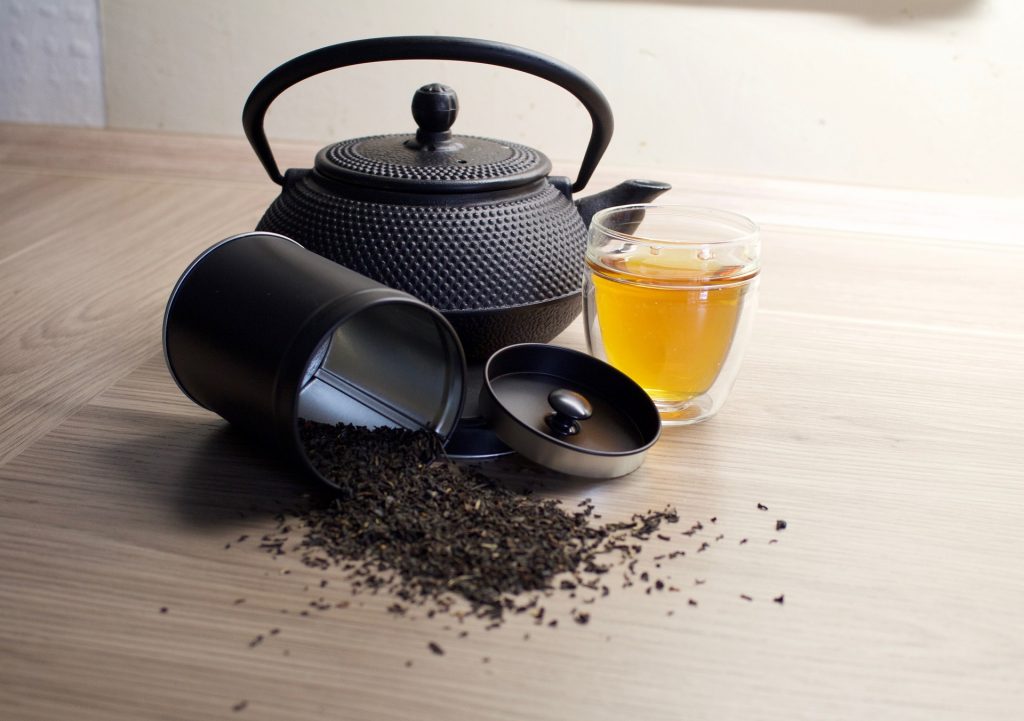 Gamma aminobutyric acid (GABA) tea is a special tea that has a greater content of GABA compared to normal tea. GABA tea is made by exposing normal tea leaves (from the Camellia sinensis plant) to low oxygen conditions. This increased the fermentation within the leaves by bacteria, causing the amino acid L-glutamic acid to be converted to GABA. GABA tea can provide a useful source of dietary GABA that may have beneficial health effects. Because GABA plays a role as an inhibitory neurotransmitter, dietary GABA may have a calming effect. In this regard, GABA tea has been shown to improve the quality of sleep in subjects with insomnia. In one case study, a patient with disrupted sleep, who had previously been prescribed benzodiazepines for her disorder was able to achieve uninterrupted sleep by drinking GABA tea before bed. The changes to sleep resembled those seen with use of benzodiazepines, but the patient had previously stopped taking the drugs and tested negative for the drugs in a urine test.
Gamma aminobutyric acid (GABA) tea is a special tea that has a greater content of GABA compared to normal tea. GABA tea is made by exposing normal tea leaves (from the Camellia sinensis plant) to low oxygen conditions. This increased the fermentation within the leaves by bacteria, causing the amino acid L-glutamic acid to be converted to GABA. GABA tea can provide a useful source of dietary GABA that may have beneficial health effects. Because GABA plays a role as an inhibitory neurotransmitter, dietary GABA may have a calming effect. In this regard, GABA tea has been shown to improve the quality of sleep in subjects with insomnia. In one case study, a patient with disrupted sleep, who had previously been prescribed benzodiazepines for her disorder was able to achieve uninterrupted sleep by drinking GABA tea before bed. The changes to sleep resembled those seen with use of benzodiazepines, but the patient had previously stopped taking the drugs and tested negative for the drugs in a urine test.

Chemical analysis of GABA tea has shown it to contain ascorbic acid (0.58 %), total free amino acid (1.39 %), total catechins (1.44 %), glutamic acid (41.35 mg/100g), GABA (180.97 mg/100 g), alanine (51.86 mg/100 g), and theanine (613.80 mg/100 g). A 250 mg cup of GABA tea would therefore contain 452.42 mg of GABA. Supplements of GABA are often found in 500 mg capsules. One cup of GABA tea is therefore close to the amount in one capsule of GABA in supplemental form.
Therefore GABA tea appears to have similar effects on sleep as the benzodiazepine drugs. This is not surprising as benzodiazepine such as diazepam, work by activation of the GABA neurotransmitter system. Interestingly the use of GABA tea also relieved the subjects back pain, which may have been a consequence of the improved sleep, or may have occurred for other reasons. In another study, researchers investigated the effects of GABA tea on the death of neurones in the cerebral cortex of experimental rats. The rats were experimentally induced to be diabetic, and such diabetes is associated with encephalopathy. The GABA tea was able to inhibit the normal apoptosis and autophagy (programmed cell death) in the diabetic rats, and this occurred through the modification of various cellular pathways. Therefore GABA tea may have neuroprotective effects and may prevent the development of brain abnormalities, particular of the kind that develops as a consequence of diabetes.

Another component of tea that may activate the GABA system is epigallocatechin gallate (EGCG). Epigallocatechin gallate is one of the catchin flavonoids found in tea, particularly green and white tea. In animal studies using chicks, administration of EGCG induces a calming sleep-like behaviour in a dose dependent manner. Further the EGCG also decreases the release of the stress hormone corticosterone when the chicks are exposed to experimental stress. Administration of the GABA antagonist drug such as picrotoxin, significantly attenuates these effects, suggesting that the behavioural and physiological effects of EGCG are being conferred through activation of the GABA system.
Certain other teas may also contain active constituents, other than GABA, that have a similar effect. For example, oolong tea is a tea that undergoes an oxidation process during manufacture similar but not as intense to that of black tea. This oxidation produces a number of volatile compounds through chemical reactions in the leaves catalysed by glucosidase enzymes. These volatiles include cis-jasmone, jasmine lactone, linalool oxide and methyl jasmonate. The jasmine compounds are similar to those found in jasmine tea. Evidence suggests that these volatile compounds can also activate the GABAA receptor in a similar way to GABA and the synthetic benzodiazepine and barbiturate drugs. Further, it has been demonstrated that inhalation of 0.1 % cis-jasmone or methyl jasmonate significantly increases the sleeping time of mice administered barbiturates. As barbiturates also activate the GABAA receptors, this suggests that cis-jasmone and methyl jasmonate can cross the blood brain barrier and activate the GABA system.
Eat Well, Stay Healthy, Protect Yourself
RdB
